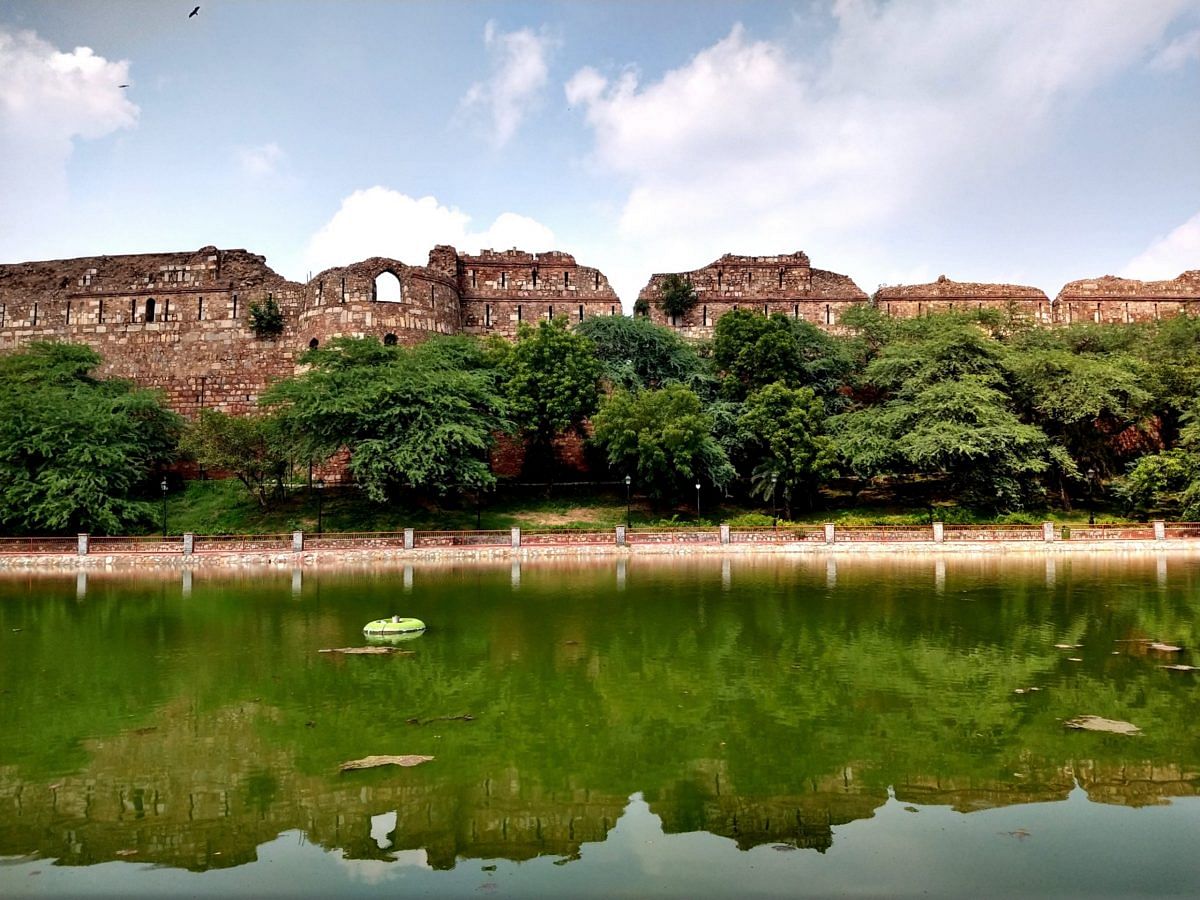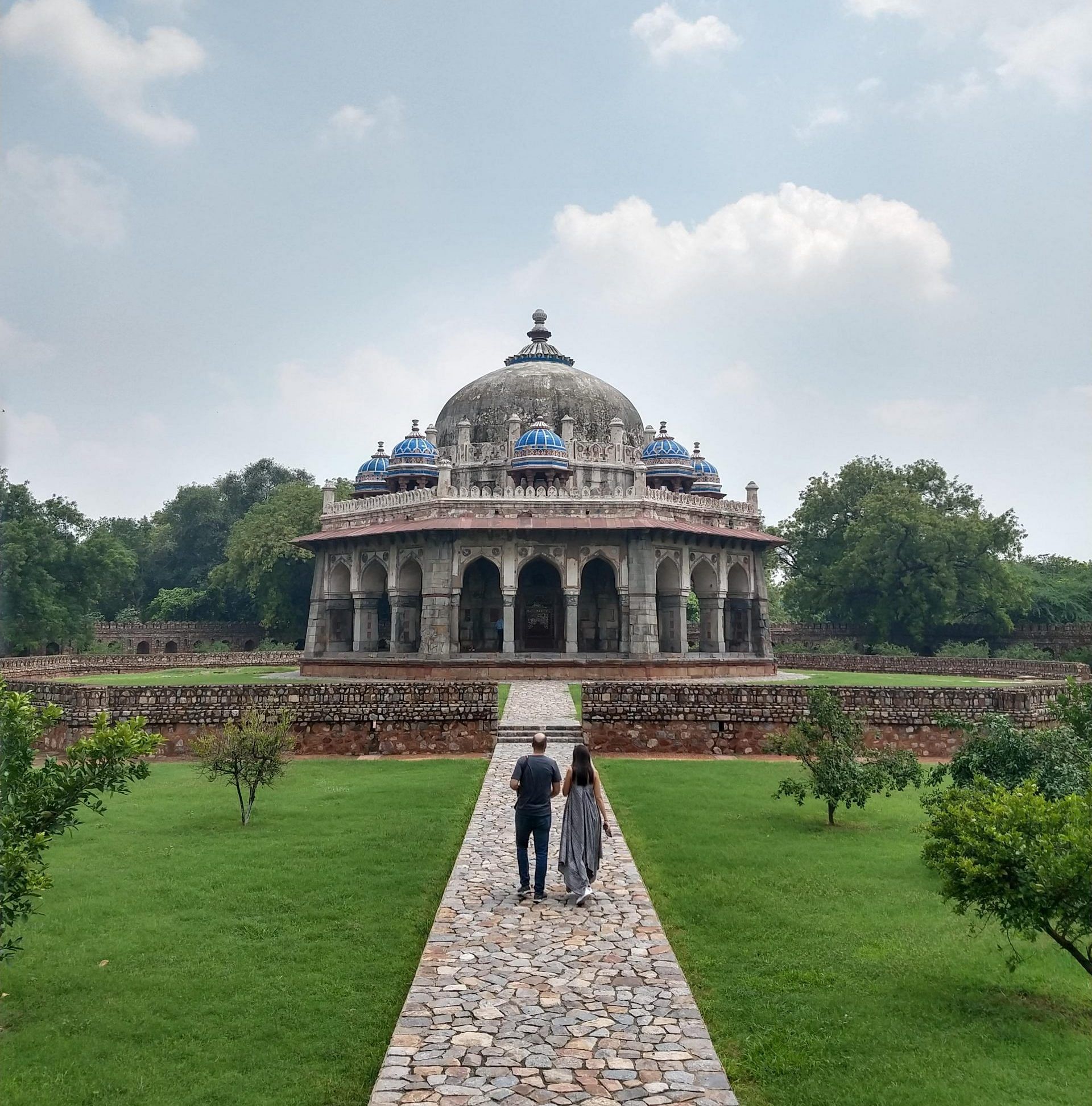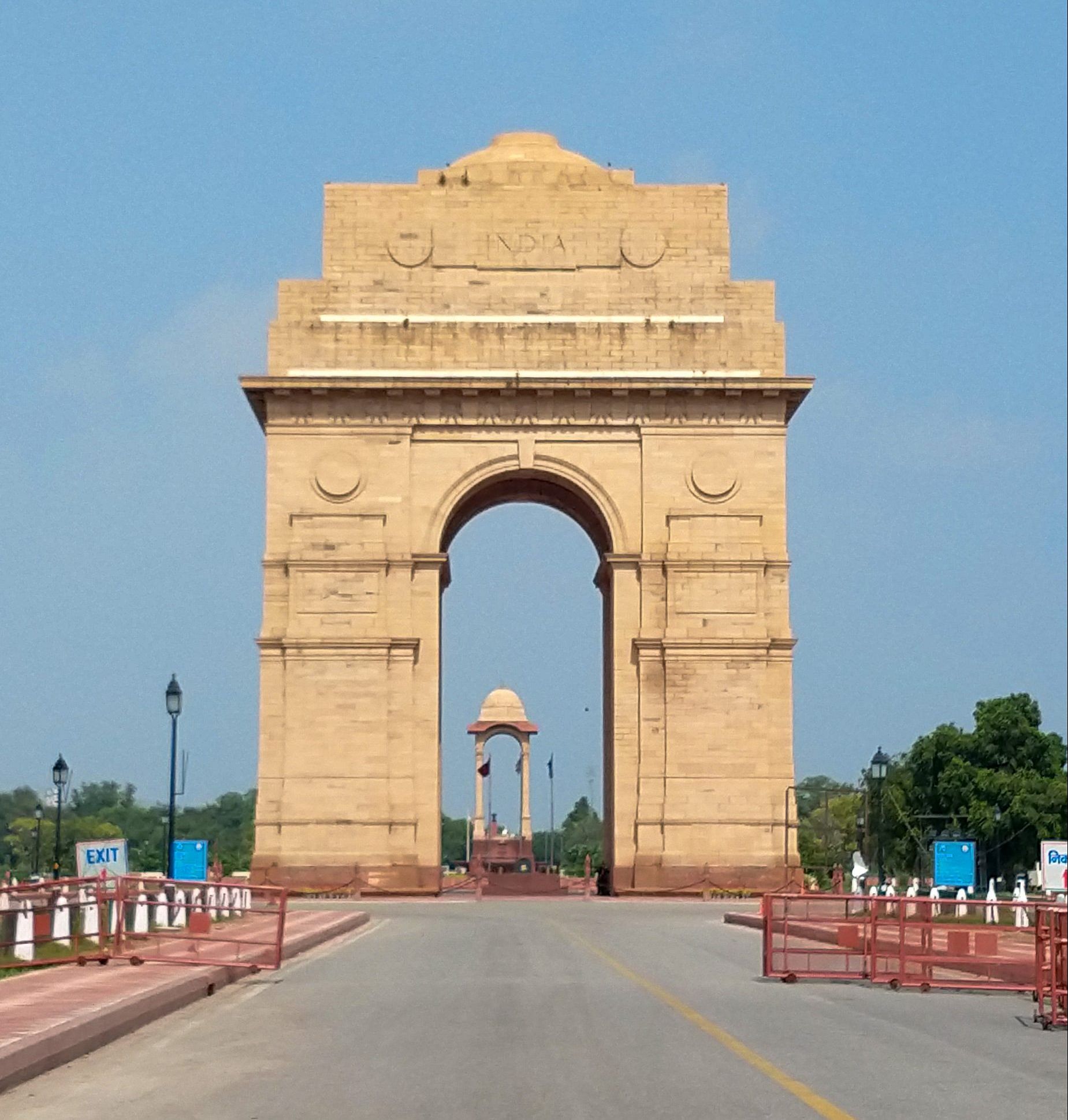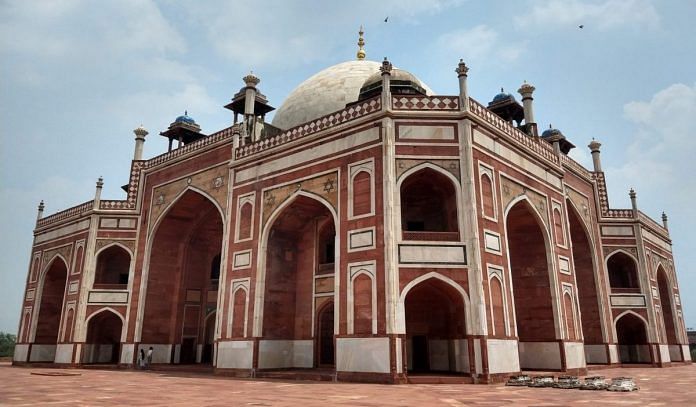One of the best things about Delhi is its abundance of historical monuments — tombs, forts, war memorials, unnamed ruins covered in moss — that are perfect for a weekend of wandering. But the crowds, the long lines, the incessant pushiness of tour guides and snack vendors and the pollution make it difficult to really soak it all in.
But right now, even though the monuments have been opened to the public after months of lockdown, it is with restrictions on the numbers, and people aren’t being too adventurous anyway. And now that the monsoon has begun and the city isn’t baking, it’s actually the perfect time for a history lesson outdoors.

From more than 10,000 to just 100 visitors a day
At the Qutub Minar, guards typically look bored and as if they are just going through the motions of their job. But not this time, with a guard jogging right up to the entrance, spraying sanitiser on the hands of the few visitors present and checking their bags with gusto.
“It’s difficult to pass eight hours sitting over here now. Less than 100 people on weekdays visit here right now,” says JP, the security supervisor at the 12th-century minaret.
There was a time when more than 10,000 people would come in a day to see the minar that he dutifully guards. Now, he has the time to chat with visitors about about how school buses filled with unruly kids would roll up, making sure he was busy all day. “More people should come visit,” he says, passionately.
Also read: Masjid dome that collapsed in Old Delhi part of 200-yr-old mosque commissioned by a woman
The Archaeological Survey of India opened all the monuments that are under its aegis for visitors after almost 100 days on 6 July, with strict rules outlined by the government regarding contactless ticketing and payments, and social distancing. For most of the popular monuments, the number of daily guests allowed was 1,000-1500 people, while the Taj Mahal has been allowed a cap of 5,000.
But in reality, not more than 100 people, 200 on a good day, show up on weekdays, while attendance might go to 500 on weekends.
Ajay Prasad who has been a guard at Qutub Minar for more than five years, says even those who do come leave within five or six minutes. “Without other visitors, or guides to help them explore the structure, even the ones who are coming feel bored instantly, as there’s nothing much to do,” he tells ThePrint.
Haunted vibe, no photobombers and a haven for couples
While it’s great to have the monument complexes almost all to yourself, to lie in a restored medieval-era garden and gaze up at the sky, or listen to music or read a book under the shade of a tree, the silence can be disconcerting too, and the structures can feel haunted and isolated.
At Humayun’s Tomb in Nizamuddin East, the scuffling sound of rats was the only sound audible in the main hall, which had no other visitors.
Without the disturbance caused by human presence, animals at these monuments can properly relax, and they’re making the most of it. Squirrels race around squeaking without a care in the world, stray dogs bask in the sun — perhaps one or two might greet you with a lazy bark. The birds sing happily and loudly, as if no one is watching, because no one actually is — that is, no one apart from a few couples making use of the space that these deserted monuments give them to enjoy a bit of intimacy that would be impossible at home.
Pairs of lovers walked around holding hands, talked without interruption or just sat quietly, arms wrapped around each other, grateful to be free of creepy and judgemental stares.
They are unhurried and happy to be out of one’s way, which also means they won’t photobomb your perfectly symmetrical panorama of Humayun’s white-domed tomb or your portrait-mode selfie pretending to hold Qutub Minar in your fingertips. And the relatively low air quality index means the sky is also on every Instagrammer’s side.

An opportunity to photograph uninterrupted is actually what spurred Delhi-based Egyptian diplomat Omar Abouzeid to visit Humayun’s Tomb with his wife. “It’s a good time to capture these moments since they’re secluded and quiet. It is also green and clean now, so I would say it’s the perfect time to explore all that Delhi has to offer, and it has a lot to offer,” he tells ThePrint.
But while it is indeed a great time to enjoy Delhi’s rich history and heritage, precautions must be followed. Unfortunately, some of the visitors who are venturing to these monuments are being a bit lax about this, and it is causing some concern among the staff.
At Purana Qila, Satendra Singh, who has been part of the fort’s security cover for more than four years, tells ThePrint: “We look at everyone as suspicious carriers (of the novel coronavirus), there’s that inherent fear now. But often, you’ll see some visitors who are not taking this disease seriously. They sometimes don’t wear masks even when we remind them, and don’t maintain physical distancing.”
A blow to the vendors
That’s not the only area of concern. Local businesses that sprang up around and because of these tourist spots are suffering huge losses because of the low turnouts.
Rizwan, who who works at a dhaba near the Qutub Minar is hopeful things will turn around after 15 August, and once again so many visitors would turn up that he wouldn’t get time to sit right from 7 am to 8 pm.
Now he sits under the shade of the half-opened dhaba serving omelettes, tea and coffee to the occasional customer.

India Gate, which, pre-Covid, would look like a mini-carnival every evening, lay empty at dusk, and the lawns near the war memorial were cordoned off. The place is known for its hawkers and street food vendors thronging the road at night, but they aren’t permitted to open their stalls right now.
Assistant sub-inspector Satinder tells ThePrint that even though it breaks his heart, he has to chase away hawkers who try to occupy some inconspicuous corner to sell their wares. “We know it’s not their fault, they are simply looking for some means to earn their bread, and everyone’s business has been paralysed. At the same time, we can’t let them go about their business (just like that).”
Standing in front of the memorial to our soldiers, one can practically see, in their mind, the gaudy helicopters and soapy bubbles floating by, children looking through kaleidoscopes, families out for picnics, joggers out for evening exercise, a theatre group or a lone dancer deep in rehearsal.
But in the new Covidian era, silence is the new normal.
Also read: Temperature checks, sanitisers, social distancing — Delhi monuments welcome back visitors



